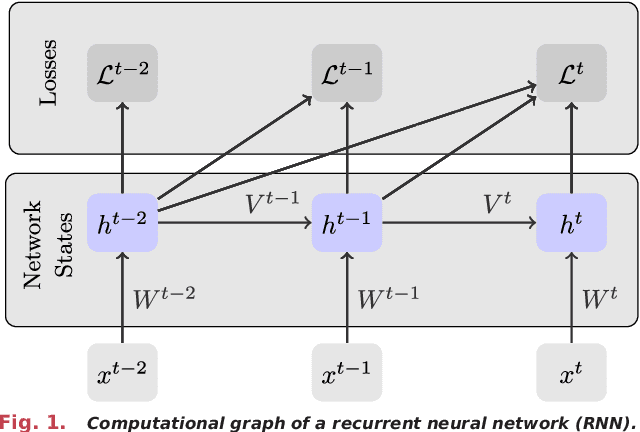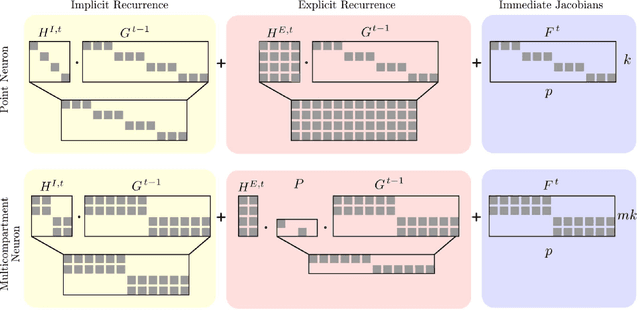Brain-Inspired Learning on Neuromorphic Substrates
Paper and Code
Oct 22, 2020



Neuromorphic hardware strives to emulate brain-like neural networks and thus holds the promise for scalable, low-power information processing on temporal data streams. Yet, to solve real-world problems, these networks need to be trained. However, training on neuromorphic substrates creates significant challenges due to the offline character and the required non-local computations of gradient-based learning algorithms. This article provides a mathematical framework for the design of practical online learning algorithms for neuromorphic substrates. Specifically, we show a direct connection between Real-Time Recurrent Learning (RTRL), an online algorithm for computing gradients in conventional Recurrent Neural Networks (RNNs), and biologically plausible learning rules for training Spiking Neural Networks (SNNs). Further, we motivate a sparse approximation based on block-diagonal Jacobians, which reduces the algorithm's computational complexity, diminishes the non-local information requirements, and empirically leads to good learning performance, thereby improving its applicability to neuromorphic substrates. In summary, our framework bridges the gap between synaptic plasticity and gradient-based approaches from deep learning and lays the foundations for powerful information processing on future neuromorphic hardware systems.
 Add to Chrome
Add to Chrome Add to Firefox
Add to Firefox Add to Edge
Add to Edge